Indian Religions
- Hinduism
- Christianity
- Sikhism
- Islam
- Jainism
- Buddhism
- Zoroastrianism
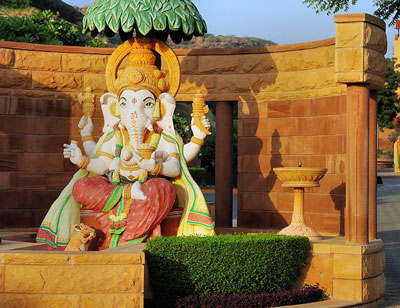 The word Hindu originally meant people living on the banks of the river Sindhu. Now it has religious-cum-philosophical connotations. The roots of Hindu Philosophy are the ideas of the Vedas.The Vedas are called Shruti or `that which is heard' and are regarded as revelations to sages passed down orally to disciples and students. Such ideas led to the Samkhya system of philosophy, which is astik (Theist), rational and systematic in its approach. The sage Kapila of 7th century BC is considered to be its founder.
The word Hindu originally meant people living on the banks of the river Sindhu. Now it has religious-cum-philosophical connotations. The roots of Hindu Philosophy are the ideas of the Vedas.The Vedas are called Shruti or `that which is heard' and are regarded as revelations to sages passed down orally to disciples and students. Such ideas led to the Samkhya system of philosophy, which is astik (Theist), rational and systematic in its approach. The sage Kapila of 7th century BC is considered to be its founder.
Yoga is a system complementary to Samkhya, dealing with the practical attainment of liberation from worldly ties. Together the two systems are referred to as SamkhyaYoga. Vedanta refers to the 108 Upanishads which are philosophical musings of the Vedas about the Cause of Creation, Being, Cosmos and so on. Prominent exponents of Vedanta are Shankaracharya and Ramanuja. In contrast, Charvaka or Lokayata philosophy is a Nastin (Atheist), materialist system, which rejects Shrutis, deities, and even the idea of re-incarnation.
Vaisheshika philosophy has a scientific rather than a metaphysical approach and believes that the world is made up of innumerable but distinct (vishesha) particles. Nyaya is a complementary philosophy trying to arrive at `nyaya' or knowledge, which is `just', or `right'. Bhagavat-Gita, a part of the epic Mahabharata, expounds the synthesis of three yogas or ways of attaining union with the Supreme Self, Gyana-yoga (union through knowledge), Bhakti-yoga (union through devotion) and Karma-yoga (union through action). In relatively later times, Chaitanyadev, Rammohun Roy and Ramkrishna Paramahamsa have enriched Hindu philosophy in their own ways.
 Christianity is not native to the Indian soil, although there have been Christian communities in Kerala almost since the founding of the religion by Jesus Christ. Born in Bethlehem, to Mary and Joseph (who was a carpenter), Jesus spread love and mercy to all. In the environment of the Roman Empire, his message acquired a unique force of its own, the powers-that-be had him crucified after he had been betrayed to them by one of his own disciples. But he rose from his tomb and this Resurrection gave new strength to his other followers, who went on spreading his message.
Christianity is not native to the Indian soil, although there have been Christian communities in Kerala almost since the founding of the religion by Jesus Christ. Born in Bethlehem, to Mary and Joseph (who was a carpenter), Jesus spread love and mercy to all. In the environment of the Roman Empire, his message acquired a unique force of its own, the powers-that-be had him crucified after he had been betrayed to them by one of his own disciples. But he rose from his tomb and this Resurrection gave new strength to his other followers, who went on spreading his message.
The Christians believe in a trinity of God the Father, God the Son, and God the Holy Ghost. Their Holy Scripture, the Bible, is a collection of 73 books dating from about 9th century B.C. to the end of the 1st century A.D., divided into two sections: the Old Testament which corresponds to the Bible of Judaism and the New Testament which is entirely based on Christ's messages.
Christians worship in what are called churches, praying both alone and in congregations. Although there are many sects and denominations of Christians, the two primary divisions are Roman Catholics and Protestants. The head of the Catholic Church is the Pope at Vatican. The Christian calendar calculates years from Christ's death. 10 years before Christ's death is 10 B.C. and 10 years after is 10A.D.
St Thomas the Apostle is said to have arrived in India in 54 A.D. Later, with the advent of the Portuguese, the French and the British in India, there was further Christian influence. In India, Christians are basically converts, although there are descendants of European settlers and Anglo-Indians. In Goa, which had been long a Portuguese domain, and the north-eastern states Mizoram and Nagaland, which had been under effective missionary influence, Christians form the majority of the population.
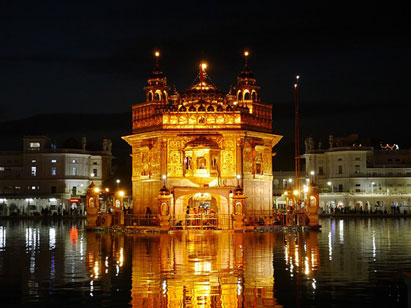 Sikhism was started in Punjab by Guru Nanak in the late 15th century. Followers of this religion are known as the Sikhs. There are about ten million Sikhs in India of whom over 85% live in Punjab. The majority of the remainder live in Haryana and Delhi. They are also scattered in other parts of India. Some Sikhs have also settled in Malaysia, Singapore, east Africa, England, the United States of America and Canada. The word Sikh means disciple. They are the disciples of their ten Gurus- the chain beginning with Guru Nanak and ending with Guru Gobind Singh. Guru Nanak was born in 1469 in the village of Rai Bhoi di Talwandi. His father was a revenue collector. Nanak received a traditional Hindu education. From his early age only he came into the association of holy men. For some time he worked as the accountant of the Afghan Chieftain at Sultanpur. There he met a Muslim family servant, Mardana. Nanak began to compose hymns. Mardana started composing music for them and the two soon made a religious hymn-singing party. From the offering made, they organised a canteen where Muslims and Hindus could eat together. At Sultanpur, Nanak had first vision of God. He was ordered to preach mankind. While bathing in a river one day a miracle happened and Nanak disappeared. When he re-appeared on the third day he had become the 'enlightened one'. He began preaching religious harmony between the Hindus and Muslims.
Sikhism was started in Punjab by Guru Nanak in the late 15th century. Followers of this religion are known as the Sikhs. There are about ten million Sikhs in India of whom over 85% live in Punjab. The majority of the remainder live in Haryana and Delhi. They are also scattered in other parts of India. Some Sikhs have also settled in Malaysia, Singapore, east Africa, England, the United States of America and Canada. The word Sikh means disciple. They are the disciples of their ten Gurus- the chain beginning with Guru Nanak and ending with Guru Gobind Singh. Guru Nanak was born in 1469 in the village of Rai Bhoi di Talwandi. His father was a revenue collector. Nanak received a traditional Hindu education. From his early age only he came into the association of holy men. For some time he worked as the accountant of the Afghan Chieftain at Sultanpur. There he met a Muslim family servant, Mardana. Nanak began to compose hymns. Mardana started composing music for them and the two soon made a religious hymn-singing party. From the offering made, they organised a canteen where Muslims and Hindus could eat together. At Sultanpur, Nanak had first vision of God. He was ordered to preach mankind. While bathing in a river one day a miracle happened and Nanak disappeared. When he re-appeared on the third day he had become the 'enlightened one'. He began preaching religious harmony between the Hindus and Muslims.
Guru Nanak visited many parts of India and preached people. He spent the last years of his life in Kartarpur where he raised the first Sikh temple. Before he died in 1539, he nominated one of his disciples, Angad , as his successor.
Guru Angad (Guru 1539-52) was followed by Guru Amar Das (Guru 1552-74); Guru Ram Das (Guru 1574-81); guru Arjun (Guru 1581-1606); Guru Hargobind (Guru 1606-44); Guru Har Rai (Guru 1644-61); Guru Harkrishan (Guru 1661-64); Guru Tegh Bahadur (Guru 1664-75) and Guru Gobind Singh (Guru 1675-1708). The execution of two Gurus, Arjun Dev and Guru Tegh Bahadur, by Mughals compelled the Sikhs to take to arms. On April 13, 1699 Guru Gobind Singh initiated five Sikhs into a new fraternity called Khalsa (Pure). He gave them a common surname, 'Singh' (lion). Kaur (Lioness) is the corresponding name given to all Sikh women. The number five has always had mystic significant in the Punjab- land of five rivers. The first Khalsa were the Panj Payares- the five loved ones.
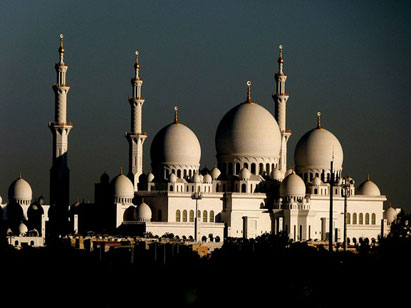 Islam had its genesis outside India, in what is now Saudi Arabia. Followers of this faith are called Muslims. Islam was basically propounded by prophet Mohammad (born around 570A.D. in Mecca), although the belief is that it was brought to the world by Adam and different messengers were sent by God to preach this lesson and Mohammad was the one who came last. In other words, Mohammad gave the final form to an already existing religion. Muslims are also referred to as Mohammedans. The sacred book of the Muslims is the Quran (from Arabic `to recite'), held to be revelations from Allah, and not the preachings of Prophet Mohammad. Engraved on a tablet in heaven, the Quran has existed from the beginning of time and was revealed to Mohammad himself through the angel Jibreel (Gabriel).
Islam had its genesis outside India, in what is now Saudi Arabia. Followers of this faith are called Muslims. Islam was basically propounded by prophet Mohammad (born around 570A.D. in Mecca), although the belief is that it was brought to the world by Adam and different messengers were sent by God to preach this lesson and Mohammad was the one who came last. In other words, Mohammad gave the final form to an already existing religion. Muslims are also referred to as Mohammedans. The sacred book of the Muslims is the Quran (from Arabic `to recite'), held to be revelations from Allah, and not the preachings of Prophet Mohammad. Engraved on a tablet in heaven, the Quran has existed from the beginning of time and was revealed to Mohammad himself through the angel Jibreel (Gabriel).
Islam is a monotheistic faith and the acceptance of Allah as the one God, and Mohammad as his prophet, is called Shahda. A Muslim is required to perform the devotional exercise of Namaaz five times a day. In the ninth month of the Muslim calendar, Ramzan, the Muslims have to observe Roza, a strict fast from dawn to dusk on each day of the month. They should visit Mecca, the birthplace of Mohammad, the prophet or Haji, at least once in a lifetime, and this pilgrimage is called Haj. They should donate a portion of their income to the poor, and this is the Zakat. Together, Shahda, Namaaz, Roza, Haji and Zakat constitute the five ingredients of Islam. Muslims worship at Masjids or mosques. The law of Islam is the Shariah, believed to be based on divine revelations. The majority of the Muslim community are the Sunnis who consider that Mohammad as a prophet can have no successor. For the Shi'a Muslims, the main religious authority is the Imam or priest. Muslims entered India for the first time at the beginning of the 8th century when the Arabs made their inroads. Muslim invaders and settlers, other than the Arab conquerors of Sind, belonged to various Asiatic races, Iranian Persians, Turks, Afghans, other people of mixed descent, and even Mongols. Muslim immigration ended with the establishment of the Mughal dynasty in the 16th century. Increase in Muslim population since then has been by conversion and natural population growth. It was because of the weightage of the Muslim population in undivided India that in 1947, the Partition was effected and Pakistan was born a day before India regained her independence.
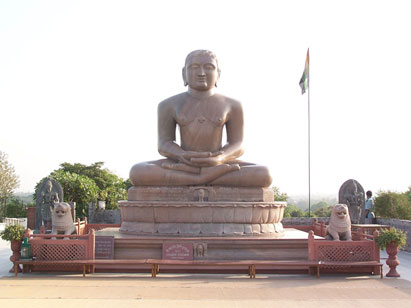 Jainism is an ancient, Indian-born philosophy, dating back to Vedic times. 24 preachers known as `Jinas' (conquerors) or `Tirthankaras' (fordmakers) propounded it across the river of life. Its first founder or `Tirthankara' was one Rishabhadeva mentioned in the Yajur Veda. The 24th and last Tirthankara was Mahavira. It is a Nastik (Atheist) philosophy and does not accept the Vedas to be revelations from God. In fact, it does not believe in a God, though it does believe in re-birth. The ethical doctrines of Jainism are based on the path of liberation, comprising right belief, right knowledge and right conduct. The prescriptions or rules of Jainism are about the way to achieve this liberation. They apply both to ascetics and householders. The householders have twelve Vratas or codes of conduct, five Anuvratas (small vows) and seven Shilavratas (supplementary vows). If the Anuvaratas are strictly performed, they become Mahavratas (Great vows).
Jainism is an ancient, Indian-born philosophy, dating back to Vedic times. 24 preachers known as `Jinas' (conquerors) or `Tirthankaras' (fordmakers) propounded it across the river of life. Its first founder or `Tirthankara' was one Rishabhadeva mentioned in the Yajur Veda. The 24th and last Tirthankara was Mahavira. It is a Nastik (Atheist) philosophy and does not accept the Vedas to be revelations from God. In fact, it does not believe in a God, though it does believe in re-birth. The ethical doctrines of Jainism are based on the path of liberation, comprising right belief, right knowledge and right conduct. The prescriptions or rules of Jainism are about the way to achieve this liberation. They apply both to ascetics and householders. The householders have twelve Vratas or codes of conduct, five Anuvratas (small vows) and seven Shilavratas (supplementary vows). If the Anuvaratas are strictly performed, they become Mahavratas (Great vows).
The Jains have two major sects, Digambara (Sky-clad or naked) and Shvetambara (White-clad). Digambara Jains are more austere and go about nude or free from all material trappings and social inhibitions. They allow for voluntary death in order to attain Kavalajnana or final liberation. In the later and less austere sect Shvetambara, people can use a simple white cloth. The difference in the two sects is more in rituals than in doctrines.
Jains believe in Anekantavada, or the theory that reality is many-sided. They subscribe to Syadavada, that is, prefix the word `syad' to every proposition as a check against dogmatism. They do not believe a statement to be complete unless all its varying conditions have been fully stated, and this has led to an expanded form of Syadavada known as Saptabhanginaya.
 Buddhism originated from the teachings of Gautama Buddha, a prince from the Nepalese terai, who relinquished palace life for a life of meditation and spiritual upliftment, emphasized dhamma or right conduct, and organized monks and nuns into monasteries called samghas. The philosophy of Buddhism is to take the Middle Path, avoiding the extremes of getting addicted to worldly pleasures and subjecting oneself to unnecessary rigors. It rejects the idea of God, and stresses on moral progress independent of any God or Godlike figure. It questions the idea of a permanent or immortal soul, but accepts the idea of transmigration of souls. A most important idea of Buddhism is that of the Four Noble Truths: Suffering exists; it is caused by desire; suffering can cease; and there does exist a path to nirvana or cessation of suffering. This Noble Eightfold Path consists of : Right resolve, Right speech, Right conduct, Right livelihood, Right effort, Right mindfulness, and Right concentration.
Buddhism originated from the teachings of Gautama Buddha, a prince from the Nepalese terai, who relinquished palace life for a life of meditation and spiritual upliftment, emphasized dhamma or right conduct, and organized monks and nuns into monasteries called samghas. The philosophy of Buddhism is to take the Middle Path, avoiding the extremes of getting addicted to worldly pleasures and subjecting oneself to unnecessary rigors. It rejects the idea of God, and stresses on moral progress independent of any God or Godlike figure. It questions the idea of a permanent or immortal soul, but accepts the idea of transmigration of souls. A most important idea of Buddhism is that of the Four Noble Truths: Suffering exists; it is caused by desire; suffering can cease; and there does exist a path to nirvana or cessation of suffering. This Noble Eightfold Path consists of : Right resolve, Right speech, Right conduct, Right livelihood, Right effort, Right mindfulness, and Right concentration.
Later Buddhism split into two sects, Mahayana and Hinayana (Theravada). Mahayana laid stress on the concept of the Bodhisatta or `one destined to be the Buddha' and also conceived of Eternal Buddhas who resemble gods or deities.
>Hinayana regarded the Buddha as a man and had a doctrine, Theravada, stressing the salvation of the individual. Later, the interaction of Mahayana philosophy and Hinduism gave rise to Tantric Buddhism or Vajrayana.
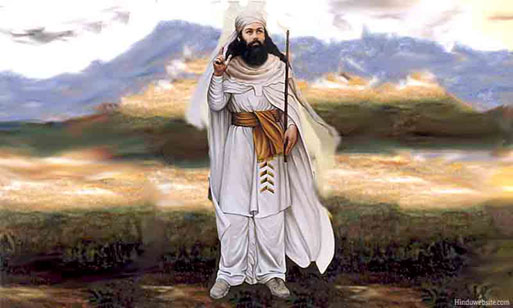 Zoroastrianism had its genesis in Iran. As they hail from Pars in south-west Iran, the people who practice this religion are known as the Parsis. In 642, when the last Iranian empire was conquered by the Arabs, most Zoroastrians were forcibly converted to Islam. Others fled the country. Today, of the 1,30,000 Zoarstrians in the world, about 1,00,000 live in India. Although their number has never been very large, and is in fact dwindling, the Zoroastrians or Parsis have retained their identity very strictly.
Zoroastrianism had its genesis in Iran. As they hail from Pars in south-west Iran, the people who practice this religion are known as the Parsis. In 642, when the last Iranian empire was conquered by the Arabs, most Zoroastrians were forcibly converted to Islam. Others fled the country. Today, of the 1,30,000 Zoarstrians in the world, about 1,00,000 live in India. Although their number has never been very large, and is in fact dwindling, the Zoroastrians or Parsis have retained their identity very strictly.
Despite being a small community, they have contributed enormously to India. Dadabhai Naoroji, author of the path-breaking book Poverty and Un-British Rule In India, Jamshedji Tata, the father of Indian steel industry, JRD Tata, prominent industrialist of the Tata House and the father of Indian aviation, are a few examples. Zoroastrianism was founded by the prophet Spitama Zarathustra. It affirms that there is one god, Ahura Mazda (Wise Lord), other gods being manifestations of his qualities. He is the Creator or Ohrmazd. Here the equivalents of angels are the seven Amesha Spentas (beneficient Immortals). Associates of the Amesha Spentas are Yazatas presiding over sun, moon, earth, fire etc. Corresponding to the Indian concept of pitri or forefathers, there is the Avesta Fravashi (Faith and Inspiration). It is supposed that there are two spirits working in this world and one of them is Spenta Mainyu, the spirit of growth and prayers. The word for `soul' in the Avesta is Urva (Chosen).
The holy text of the Zoroastrians is the Avesta, composed in a language belonging to the early Iranaian group of languages and resembling the language of the Vedas. The daily prayer-book the Parsis use everyday is Khordeh Avesta (the smaller Avesta). The Videvat are religious law books laying down codes of conduct and procedures for penance. The Yasna is the handbook of ceremonies, retreats etc, including the 17 cantos of the five Gathas - Abunavaiti, Ushtavaiti, Spenta Mainyu, Voha Khshathra and Vahishtoishti. Visparat is a supplement of the Yasna, glorifying Ahura Mazda. The Yashts is a reservoir of epic and historical happenings involving warriors and kings. All followers of Zoroastrianism have to wear the Sadra and Kusti, a narrow band round the waist, similar to the upavita of the brahmanas. Aiwayaonhana (which also means stormy sky) is the term used to refer to it in the Avesta. The band is woven out of 72 strands of sheep wool (symbolic of the 72 chapters of the Yasna) and is wound thrice round the waist symbolising the three cardinal tenets of the faith: good thoughts, deeds and words.
Zoroastrianism flourished during the Acharminian dynasty of Cyrus, Darius, Xerexes and others.
